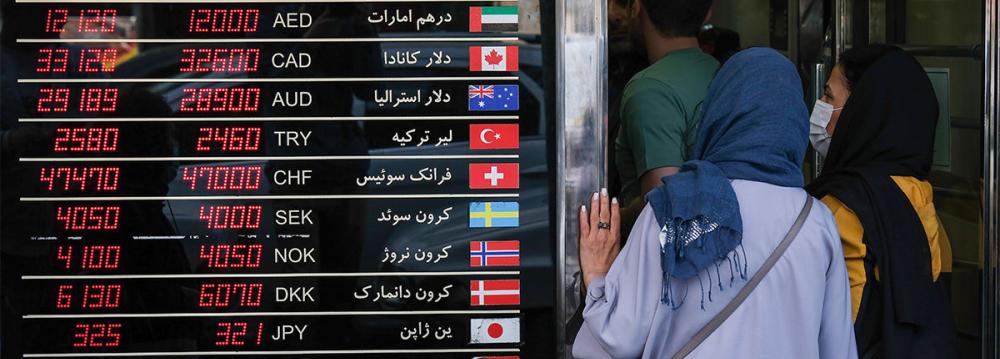The Central Bank of Iran said €12.7 billion was supplied to the market via the Iran Center of Exchange (ICE) after it launch in late February.
From the total forex offered via the ICE, €7.05 billion hwas bought, IBENA reported. During the same period, 9.398 billion UAE dirhams was offered in the market of which 7.6 billion were purchased.
Petrochemical and mining companies accounted for the largest portion of currency supply with €3.3 billion and €2.7 billion, respectively.
Close to €70m was sold to Iranians travelling abroad.
The CBI unveiled the ICE in the latest bid to control forex and gold prices that have jumped to levels unseen in the history of the country.
Mohammad Reza Farzin, the CBI governor, said, "Rates at the center will be the reference rates for the market based on demand and supply of currency and gold, as well as key economic indicators. The aim is to set up a place where supply and demand interact at a reasonable price.”
He said, "We will offer Quarter Bahar Azadi gold coins to curb [rising gold] prices." The CBI also has plans to use the center for currency swap and derivative forex instruments.
The idea to launch the center was initially floated as an amendment to the Iran Central Exchange operations. Farzin referred to the CBI's recent measures to help address the “real need for foreign currency” of businesses and the people.
The senior banker said the regulator will continue supplying importers of basic goods and medicine with subsidized currency at 280,000 rials to the US dollar.
Last May the government officially ended to the costly and controversial currency subsides ($1=42,000 rials), aka as preferential currency, which was given to selected importers of basic goods.
Soon after businesses said that with the end of the subsidy policy they would obviously need huge infusions of cash for importing raw material to bridge the gap between subsidized forex and open market rates. They urged the government to reconsider and compensate the liquidity crunch.
The central bank had announced earlier that plans are underway to expand the role of Nima in supplying the chaotic forex market. "Past policies must be reformed. A big part of forex is supplied via the Nima platform and our ultimate goal is to stabilize rates in this system at or near 285,000 rials to the dollar," Farzin was quoted as saying.
Currency rates have jumped to historic highs over the past several months as the rial tanks and people seek safe havens to protect what is left of their hard-earned savings.
The ‘Council for Coordination of the Three Branches of Power’ has decided to delegate more authority to the CBI to enable it prop up the tanking rial and stabilize the currency market.
Farzin recently said the CBI has started buying and selling currencies directly, to help accelerate the process of currency allocation.
In a meeting with exporters, importers, and producers he said, "Foreign exchange rate is one of the fundamental issues for the economy…time and effort of the bank and the government is focused on how to restore stability," the CBI website quoted him as saying. He stressed that most of the currency is supplied by exporters, including petrochemical and steel companies.
However, he referred to certain issues causing delays in the currency supply process and CBI plans to directly buy currency from exporters without intermediaries. "This approach can and will reduce costs and shorten the time required for currency procurement."
On recent measures taken by the CBI he said was "Allocating currency from government reserves for essential goods and medicine was one of the first steps taken to restore stability and prevent steep jumps in exchange rates."


